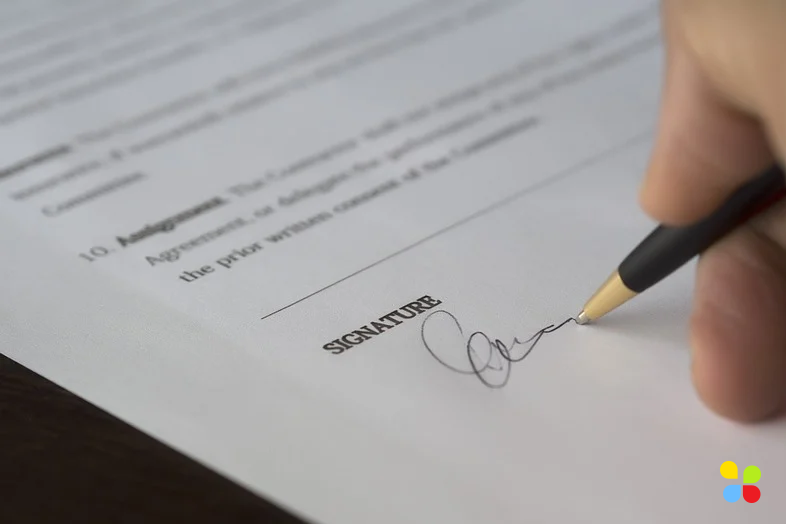
The quality of your business writing and communication within and outside your organization says a lot about your business itself. It’s a fact that your target reader, whoever that might be, will judge your brand, quality of service and professionalism based on the content they read from you.
Let me give you an example – you might have the greatest business idea, but if your business plan isn’t able to present that information succinctly, chances are it will miss the mark.
Similarly, poorly written sales emails will lose you clients. Poorly designed and written brochures will set your brand image back by quite a bit. Even memos or internal emails (communication that does not leave your organization) that do not follow the basics of business writing will damage morale and credibility.
You might be the savviest business owner, a great entrepreneur, someone who has built up their business from the ground up. The fact remains that effective business writing doesn’t come easily to everyone.
Contents
- The Basics of Business Writing (The 10 C’s of Business Communication)
- Your Writing Must Be Crisp and Confident
- Be Clear – Leave Nothing to Chance
- Your Messaging Must Be Complete with the When, Where, Why, How and Who
- Nobody Likes Rambling Messages – Be Concise, Keep It Simple, Stupid (KISS)
- Make Your Point Well by Being Coherent
- Credibility Above All Else
- Avoid Ambiguous Language – Your Message Must be Concrete
- Be Correct – Don’t Throw it All Away
- Professionalism and Courtesy Go Hand-in-hand
- Remain Considerate – Think About the Reader & Make It Easy to Read
- Essentials of Good Business Writing
- Formatting Your Business Content for Maximum Impact
- Editing and Fine-tuning Your Business Writing
- Business Writing – Specialists at Your Fingertips
The Basics of Business Writing (The 10 C’s of Business Communication)
It’s important to note that business writing isn’t about getting the gist of your subject across. It isn’t about using jargons that your target audience might not understand.
You might be trying to come across as an expert, but ask yourself: would your language welcome everyone to the fold or are you risking alienating your target audience?
In the same vein, you want to keep your tone professional – but how professional is robotic? Because we all know personalization is essential in good business writing that gets results.
The first favor you can do yourself is to understand that the goal of your writing is to communicate; with subordinates, peers, clients, and even prospects. At the end of the day, it’s just another mode of communication.
If you look at the 10 C’s of effective business communication, they present a viable framework of the essentials you need to keep in mind for good business writing.
In essence, your writing should be:
- Crisp
- Clear
- Complete
- Concise
- Coherent
- Credible
- Concrete
- Correct
- Courteous
- Considerate
By following these 10 C’s, you present your writing as professional and authoritative right off the bat.
That said; let me tell you (from experience), they aren’t enough.
Anyway, let’s take a deep dive into these 10, and then we’ll move on to other business writing best practices that you need to keep in mind.

1. Your Writing Must Be Crisp and Confident
When looking to type out any piece of business communication, you might be tempted to write as if you are writing up a contract or another legal document. Yes, you need to be professional, but don’t stop yourself from being confident.
Remember, you’re doing this because you’re in a position to be doing this. You know what you’re talking about and have the authority and credibility to say what you want to. Be confident and write as the authority.
When writing, don’t shy away from using words like ‘must’ or ‘shall’. This will make your message seem much more assertive.
Having said that, don’t forget to add this one simple line (or something with similar affect) somewhere in your piece (preferably near the end).
“If you have any concerns, questions, recommendations, or a point of view to share, please feel free to address the same as a reply to this”
This shows that although you deliver your message crisply, you are open to suggestions and corrections as well, effectively making you seem more ‘approachable’.
2. Be Clear – Leave Nothing to Chance
The thing about business writing is that even the slightest bit of uncertainty can lead to a myriad of problems. Whether it’s an organization-wide email or a sales proposal to one client, the words you use will be open for interpretation.
So when writing make sure that your messaging is clear. Say what you want to say and do so as clearly as possible.
Let me give you an example to show you what I mean.
Consider the following:
“This email serves to address a recent issue that arose between a few colleagues in the QA department, one that is strictly against the spirit of camaraderie that we uphold here at Company & Co.”
The sentence above seems to address a grim subject. However, if a person is not privy to what happened over in QA, the email will either 1) not catch their interest or 2) pique their interest to the point where they want to know what the “issue” was and partake in gossip, further exacerbating the issue!
Instead of this, write:
“This email serves to address last week’s fallout between some of the QA staff. The management understands that conflicts arise during the course of business, but we believe that this wasn’t how it should have been handled.”
3. Your Messaging Must Be Complete with the When, Where, Why, How and Who
If you consider the example above again, there is one more important consideration to make. Your message must be complete.
The first statement doesn’t do a good job at explaining what it is that went on, when, why, where, or how. What it addresses is the “who”.
When writing, it is easy to forget that not everyone will be as well-informed about the subject as you are – even if it’s just a memo highlighting the employee of the month.
One of the core elements of business writing is that you need to clearly mention every intricate detail of your subject so that the reader feels as invested in the matter as you.
4. Nobody Likes Rambling Messages – Be Concise, Keep It Simple, Stupid (KISS)
KISS is a simple business management and communication principle; one that is a crucial business writing basic.
By being concise, we mean exactly that. Don’t use redundant phrases or over-explain your point.
A very common mistake that even some seasoned business writers make is using the same word twice in an attempt to drive the point home.
This may backfire. Don’t treat your readers like children.
Some business writing examples for redundancies include:
- “Several different options”. Several and different are the same word here.
- “Postpone to a later date.” Just say “adjourn” in its stead.
- Get rid of the ‘I am writing to inform you’ unless you really don’t have much to say. A one-line letter won’t do you any good either, contrary to belief.
- Don’t emphasize until absolutely necessary. In my experience, it is usually enough to emphasize the subject of your letter, or the pricing structure, if you are mentioning it in a paragraph.
5. Make Your Point Well by Being Coherent
What good is a business letter or sales email that the recipient can’t even understand? The problem writers often face is that fingers (typing) are slower than the mind (thinking). It is very likely that in your haste, you will write incomplete sentences or not explain your message as much as you should.
Be coherent with your language and how you structure your sentences. Not only that, sort the information, thoughts, ideas, a suggestions in a manner consistent with business writing best practices. The general format to follow when laying out information is to start with the problem, suggest a solution, and then explain why the solution would work.
Let’s say you’re writing to your supplier. Instead of writing
“We conducted a thorough inspection yesterday where we compared the inventory on paper with what we really have and found that some items were missing. Not only that, after further investigation we also found that the last batch you supplied has a few damaged items. The damage ranges from slight chips all the way to complete breakage.”
Simply write
“Our audit team conducted a stock check yesterday and found that inventory is not only missing, it is also damaged. We would like to schedule a meeting with you at your earliest convenience to resolve the matter.”
The second statement is much more coherent, starting with the problem and ending with a solution – and that too in a concise manner. There is also a sense of courtesy and consideration in it, which I’ll come to in a bit.
6. Credibility Above All Else
When it comes to effective business writing, readers can overlook everything and give you the benefit of the doubt (in the first few instances), except one thing: factual mistakes.
Business writing is supported by facts (and figures, where applicable), not opinions. When writing, make sure you are only using reliable/credible information that you can back up.
You might be tempted to show off that you know a lot, but don’t risk your own neck just because someone else told you that the inventory is damaged – unless of course you have the documentation to prove it.
Reference your facts, sort the data in a consumable and friendly manner, and offer an unbiased view of the situation.
For example, if you’re writing a business proposal and claim the market demand for a product without doing actual research, not only will the proposal fall flat on its face – you could lose market credibility.
7. Avoid Ambiguous Language – Your Message Must be Concrete
Writing concretely doesn’t mean writing with firmness and assertiveness. It means that when communicating, you need to avoid using vague words, such as ‘some’, ‘many’, ‘few’, or others.
Where circumstances are not in your control, try to be as specific as you can without inconveniencing the reader, unless of course, the situation demands inconvenience.
Try to include numbers, dates, timeframes, schedules, and more to make your sentences more ‘concrete’.
Let’s take the example from point 5 above again:
”There are many items in the shipment you sent over that were damaged.”
Instead of this, a concrete way of writing would be:
“We found 70 out of the 100 items within the shipment damaged beyond repair.”
This way, both parties know what the issue is and solutions come to mind immediately.
8. Be Correct – Don’t Throw it All Away
The business world is harsh. If you’re making mistakes in your business writing, you can well be labeled as someone who makes mistakes in other business dealings too.
You don’t want the phrase, “doesn’t even know what he’s talking about” attached to your name.
It is crucial that you pay attention to the details.
For me, some of the most common areas where people make mistakes include:
- Name and title
- Spelling and grammar mistakes (Try to make sure grammar is on point, but depending on whether you’re writing in your native tongue or not, executives don’t have a problem with grammatical errors in most cases. Just make sure the mistake isn’t changing the sentence’s meaning).
- Using the wrong format. Consider asking someone or doing some research about how to format that specific bit of business writing. This is one piece of business writing basic that’ll help you always.

9. Professionalism and Courtesy Go Hand-in-hand
It is easy to unload all your frustration on an employee when writing a warning letter. The same applies to when communicating with an aggrieved client or when trying to settle a dispute.
Even if you don’t want to, chances are that you might find yourself including sentences that could be interpreted as negative. It’s all about the tone you use.
Put the reader first and consider their perspective. Your goal with business writing should be to always remain positive. You can do this by avoiding the use of a commanding language or false positivity. The best way to do that is write what you will at first and then re-read what you crafted.
It’s a business writing basic to re-read what you have written at least thrice – but no more than 6 times, else you risk over-editing. Understand the difference between editing and proofreading. The first couple of times you’re re-reading, you’re doing so with the purpose of editing. The last one should be a proofread.
Instead of writing:
You must be ready for a meeting by 10 am
Try writing:
We would like to schedule a meeting with you at 10 am. Please let us know if you need any help form us managing your work load for the same.
In the second statement, you aren’t just being courteous about the meeting, but also remaining considerate about their work load, thus being more inviting.
10. Remain Considerate – Think About the Reader & Make It Easy to Read
No matter who you are writing to, what the subject is, or how frustrating the matter, you need to consider their feelings. Write as if you are giving them the benefit of the doubt and remain considerate in terms of the wordings.
Being considerate isn’t just limited to that, though. You also need to consider the format, readability, scanability, and the platform you are using to communicate.
The best way to do that is by splitting what you are writing into paragraphs, with each paragraph highlighting just one idea.
Unlike writing business articles, you don’t have to stick to the three-line rule, but try not to cross the 6-7 line mark, either.
Essentials of Good Business Writing
The 10 C’s of communication are great and can certainly help you write competent letters, proposals, and other forms of business writing. However, they are just the start.
Now, you need to consider how you go about strategizing the writing process.
This is just as important, but can be relatively difficult to accomplish; which is why the best business content writing services, like us, focus much more on these elements when writing for clients.
1. Knowing Your Target Reader
We mentioned how one of the most common mistakes writers make is in the minutia like the name and title of the addressee. Another common business writing mistake is the tone.
All of this is a sign that you don’t know your audience; i.e., who you are writing for.
When writing, keep in mind that the focus is what the reader knows and what they don’t know; not what you know.
Pro Tip: Assume that the person you’re addressing is well-versed with the industry, but knows nothing about the issue at hand. If the recipient isn’t a part of your organization, it is a good idea to assume that they are aware only of the bare minimum required in the industry.
Before you get into writing, ask yourself the following questions.
- Who is going to read the communication?
- What’s the form of communication?
- What do you want to tell the recipient?
These are very basic questions, which is why it is a good idea to stop writing if you don’t have the answers to any of the three questions.
It’s time to first do some research and understand what you’re doing.
2. Planning and Processing

Next step is planning what you are going to write and more importantly, what the message will entail. At this point, writing hasn’t really begun. You are just going to go over the elements of good business writing and strategize.
a. Think & Plan
Before you start penning your thoughts, try to think about what you’re going to write. Go over the same in your head. We recommend spending 50% of your total writing time thinking and planning. When planning, consider the following;
- What is the main message?
- What tone to use?
- How should you introduce the subject?
- What would the subject heading be?
- What is the underlying problem and what solution do YOU have in mind?
- How will you invite the other to a dialogue without sounding harsh?
- How will you pitch your solution?
- How will you conclude?
- What address should you include for return mail (or email)?
b. Drafting
Develop the heading, create concept maps in your head, and start creating a mental draft. If you aren’t comfortable drafting in your mind, you can jump right on to the word document. We have several business writers here who find it easier to draft on paper directly, as well, so there’s no shame in this.
When drafting, accept that this is a rough draft, though, and that you are simply penning thoughts. The goal here is to complete the draft and get some sense of accomplishment. Drafting should take about 20% of your time.

When planning, create headings before you start filling them. Yes, headings don’t necessarily have to make it into the final draft, but right now you need a stencil – and those headings will be just that for you.
Once all the headings are listed, go through them to verify whether you are covering all the important bits or not.
Although it isn’t a good idea to jump in and out, but in the corporate world, not everyone has the luxury of not being disturbed. That is why you need the map or outline (via headings) you created. These will save you time and effort as you continue writing.
c. Editing
About 30% of your time should be allocated to editing. We don’t recommend you get to this part before you’re happy with the content of your letter, proposal, or other form of business writing.
We’ll discuss editing in detail in a later section.
Formatting Your Business Content for Maximum Impact

The formatting of your business writing depends on what it is that you’re writing, who you are writing to, and where you’re writing from. For example, when it comes to formatting a business letter, both UK and US have different industry-accepted formats.
Having said that, there are some elements of business writing formatting that remain the same. Let’s consider these.
Don’t Exceed the 6-7 Line Mark
As mentioned above, try not to exceed the 6-7 line mark and try to wrap up your idea within the paragraph. The longer your paragraphs get, the more your readability will suffer.
Use Gender-Neutral Wording
It is a good idea to use ‘they’ instead of him or her, salesperson instead of salesman or saleswoman. The goal is to ensure that whoever reads it finds it to be more ‘welcoming’ instead of offensive. If you are writing it to a specific person, avoid using constructions such as “his/her” or “s/he”. Address them with the proper pronoun to make it more considerate and personal.
Bold Where Applicable
It’s debatable whether headings should be used in a business communication or not. If any piece of writing is long or if it addresses numerous issues in the same body, headings fare better, but the argument about whether headings should be used in short letters as well is still ongoing.
One element of business writing everyone agrees on, however, is that you should consider highlighting important bits by turning them bold. This will allow your readers to scan the text easily.
How to Format a Business Letter
A business letter or email is the most frequent mode of business communication. Accordingly, one of the most frequently asked questions when it comes to business writing is how to format a business letter. Depending on whether you are in the UK or US, the format may differ.
In the US, everything is left-aligned.
Following is the US business letter format for you to consider:
- Start with your own name, address, phone number, and postal code. (left aligned)
- Follow it up with a date. (left aligned)
- Write the recipient’s name, address, phone number, and postal code. (left aligned)
- Add a subject. Turn it bold and underline it to highlight the same.
- Add an intro where you give a general gist of the problem
- Discuss the problem in the second para or jump right to the solution
- Conclude
- Sign, write your name and designation. (left aligned)
For the UK version, follow the same instructions except for the first point. Instead of keep it left aligned, right align it (Ctrl + R for word and outlook).
Avoid Jargon
You might think that using jargon will make your letter seem more professional, but we’re here to tell you that this isn’t the case. It’s quite opposite, in fact. Not only will you end up confusing laymen readers, executives agree that jargon shows insecurity.
Use industry-specific words only where necessary. Otherwise, stick to plain old English (or whichever language you are writing in).
Now that you have a good idea of what to write and how to write it, it’s time to start penning your thoughts to paper (or a Word document).
Editing and Fine-tuning Your Business Writing

If you’ve reached this stage but feel that your writing needs editing/proofreading, or another pair of eyes before you send it out – it’s best you hire professional editors to help you. Our copyeditors go into the crux of the content and provide critique. If that’s too much for you, our proofreaders can make help make sure your grammar, spelling and sentence structuring are on point!
Here are some things that you should keep in mind in case you decide to go it alone.
Curb the Superlatives!
In a world where we are used to writing texts without grammar checks or any sort of professionalism, it is important to remember that one exclamation mark is already a superlative. You are doing yourself no favors at all by adding more.
Don’t use more than one point, no matter how important it is. Bold or italicize it if it’s that important. And if possible, try to replace any emphasis punctuations with clearer words. Exclamation points and italics may end up sending the wrong message across.
The Process
When you start editing, the first thing to consider is whether the content and its tone matches what you want to say and what readers are willing to read. Too long of a letter and it might end up losing its value.
Next, make sure the document is easy to scan. Use bold text to highlight important bits. If it is a long message, try to add headings, use bullet points, and BE GENEROUS WITH THE WHITE SPACE.
And last, but not the least, focus on correcting your grammar, sentence structure, and fluff. Use a tool such as Grammarly or Hemingway to help you out here. Make sure the paragraphs are broken up, the length is varied and punctuation is all in its place.
Consider the following;
I like cooking my family and animals.
Or
I like cooking, my family, and animals.
Have Business Writing Needs? Our Specialists are at Your Fingertips
As a business owner, it’s okay that your strength isn’t writing. It’s also important to realize that having experts step in will only help you streamline processes and get better results.
If you’d like to learn more about our various business writing services, get in touch with us via our chat option or call us today at (877) 897-1725. Remember, your target reader expects valuable content from you that addresses the need of the hour. So make sure you give it to them.
